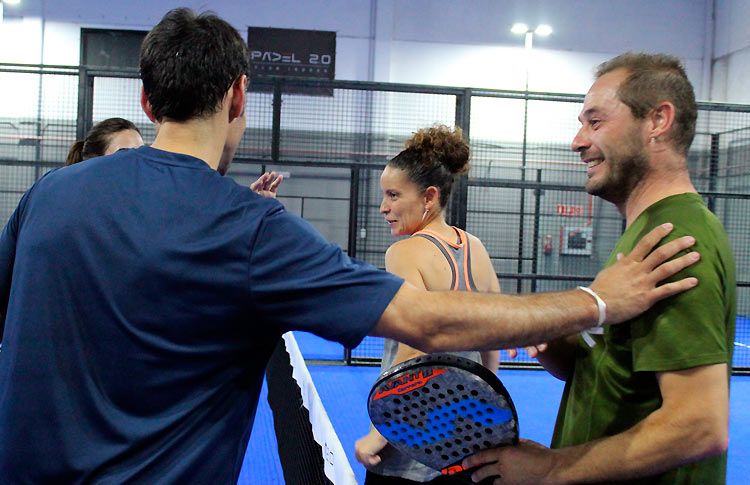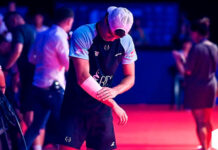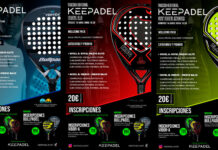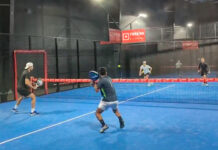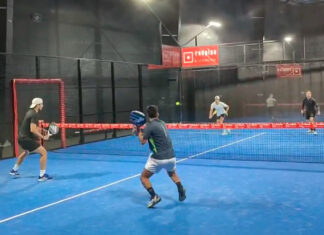Padel World Press .- More than once it has happened that an athlete begins to travel through a physical training plan for the discipline he practices and does not see the changes or feel the improvements. Unfortunately, sometimes you do not train for what you play, you do not respect sports skills, intervening metabolisms, game times, rest times, directions and displacements, dimensions of the court, speed and type of game ... And that's where it may be one of the reasons why the benefits of physical training are not achieved.
That is why this article will define the paddle, but analyzing it from the capacities of the sport and from the metabolic.
Characteristics of the paddle
From the capabilities.
- Motor Anticipation.
- Force: Explosive / Reactive.
- Speed: acceleration reaction and braking.
- Resistance: Local muscle.
To the Explosive Force.
- Coordination and Agility.
- Flexibility and Agility.
We will define each of these components that characterize the paddle and that they are going to give us some more data so that, when it comes to building a training plan, we have clear to what we play and where we should go.
One of the most important factors that the players possess is, without a doubt, the Motive Anticipation. By it is understood the ability to mentally advance situations and actions, so that movements will have greater reaction and success. (Grosser M.)
We dare to say that without anticipation it is impossible to play. The reading of the movement, of the stroke, of the action of my opponent is the richest and purest information that the player obtains and the one that, in addition, allows him to make the motor adjustment prior to the arrival of the ball.
While we understand by Force the ability to apply a load (Bompa) ... But now we must differentiate and specify the different types of force that are present in the game, then we define the:
- Explosive force: as the ability to generate high levels of force in a short period of time (Bosco).
- Reactive Force: as the ability of the muscle to produce a cycle of stretching - shortening, giving high values of strength.
These manifestations of the force are used in each one of the blows, in each jump, in each of the sprints and in the different actions that allow us to reach a faster ball and better positioned to technically perform the indicated stroke.
Here we must include when we mention the word 'fast' at Speed, defined as the ability to achieve, based on cognitive processes, the maximum volitional force and functionality of the neuromuscular system, a maximum speed of reaction and movement under certain established conditions ( Grosser M.).
But the specificity of the sport asks us to have:
- Reaction speed: what is the ability to react in the shortest time to a stimulus.
- Acceleration and Braking Speed: increasing and maintaining speed in a given time makes acceleration, while the ability to brake, to stop engages both the nerve fibers that make the decision to braking and the muscle fibers that perform the action.
- Resistance: expressed as the muscular ability to maintain a task for a prolonged period of time (Bompa T.). In its specific manifestations such as:
- Local Muscular Resistance:which is the ability to overcome a resistance as frequently as necessary.
- Explosive Strength Resistance: it is as important to execute the first blow of the match as the last of the third set ... In turn, in a sequence of blows such as a volley match, the player must remain with the same values in each of the strokes.
- Flexibility - Agility: as a capacity, being flexible, that the muscle has sufficient elasticity, collaborates in the amplitude of the range of movement, reaching a ball in the corner well down also depends on how flexible and agile we are, to accommodate the body and perform the corresponding technical action.
It is time to analyze the padel from the metabolic, from how the organism through a series of chemical reactions transform the energy we incorporate through food.
Metabolic Analysis
- Flashing Sport.
- Predominantly anaerobic - alactacid.
- In need of support of the aerobic system.
El paddle, as an intermittent sport, implies short moments of effort with or without element, which rarely reach maximum career intensities. It presents pauses that at least have a relation between 1: 1 and 1: 2 with respect to the effort and, when using the element, the pause in general surpasses this type of relation.
Intermittent exercise has characteristics of metabolic response that are different to the traditional within what is the pedagogical scheme of three energy systems (alactásido, lactásido and aerobic), classically described for cyclic sports. Intermittent endurance training for the characteristics of the ball game is what resembles the type of athletic effort.
After statistically analyzing play times and breaks, we took an official meeting of the APP Circuit, and we did a job taking pure game times, understanding since the ball was set in motion by the serve until the end of the point. The pauses within the match were clocked, that is, from the moment the point was made until the ball was put into play for the service. Odd rest times were also taken and analyzed the total net time of play, net time of pause within the shock, net rest time, net time of 'game' (play + pause) and total set time and, with all that information, the average was taken out.
We found important data to take into account when planning and some of the results are:
- In one hour ten minutes, match infraction, we find fifty-six minutes with 36 seconds of play in the duration of the three games and a time of thirteen minutes and 44 seconds of rest in odd.
- In turn, in the game time, there were twenty nine minutes with 45 seconds of net play while the remaining twenty six minutes 46 seconds were paused within the duel.
- If we analyze the heart rate during the game, the data that the monitor gave us say that, in the total duration of the match, it was below the work zone for twenty-two minutes with 21 seconds. For thirty-seven minutes with 28 seconds it remained between the 160 - 180 beats per minute while twenty one minutes with 35 seconds was played over 180 beats / min.
- These data that we draw allow us to characterize the sport so that, at the time of planning a training, it is known what should be trained and how.
Anyway, this work should be accompanied with lactic acid intakes to be able to determine for certain what we propose from the cardiac registers.
There remains the doubt and the challenge to continue investigating and determining the best working methods, specific exercises and the capacities to develop, in those who are in charge of offering the best spectacles of this sport: the Players.
* You can follow all the news of the world of paddle in our profiles of Facebook y Twitter as well as subscribe to our Newsletter .

